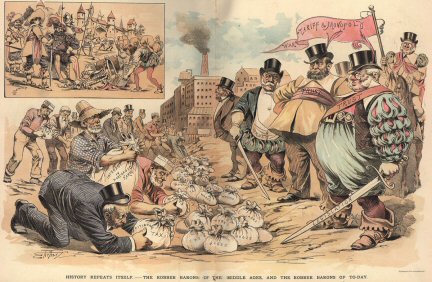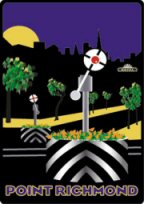November 08, 2003
The Railroad Crossing – An Anachronism?
By Fred H. Arm
How often have we heard the plaintiff wail of a BNSF locomotive signaling its arrival at the East Richmond crossings? The clanging of the wig-wags and the traffic reluctantly stopped, not merely to let a train pass on its way to its destination, rather the beast simply stops a few hundred feet past the crossing to allow some unseen hand switch the tracks behind and finally backs up the way it came. From what used to be a legitimate crossing of the trains to the Ferry Point to transport rail cars upon a waiting train ferry, it is now nothing more than a switching station. The rail ferries have ceased to exist years ago.

The citizens of the Point and the City Administration blithely go about their day simply muttering their discontented murmurs as they wait dozens of times each day for the miserable train to finish their task. Thousands of man hours are wasted waiting up to ten minutes or longer for the road to clear. During the night, when everyone is asleep, the train crossings continue, blasting their cacophonous thunder, shattering many a good night’s sleep.
It is incomprehensible in this age of consciousness about noise pollution and traffic obstruction that we allow this anomaly to continue. Residents around airports have many years ago litigated all the way to the United States Supreme Court to collect damages for the excessive noise they must endure and have gained concessions from the airport authorities as well to help abate the noise.
Historically, when the Railroads were king, Congress passed laws to give the Railroads the power of eminent domain to take over private lands so that their rail beds could be completed. That era has long passed. There are probably half the Railroads around then there was a hundred years ago. More recently, Railroads have negotiated for easements over land for the purpose of hauling freight and passengers. The landowner would contract with the Railroads giving them a right-of-way. Sometimes, the Railroads owned the land under their tracks and the cities that grew up around them, would contract for an easement over the Railroad’s land for traffic to pass.
No one seems to have any idea what the status of the land is where the street crosses over Richmond Avenue. I have contacted the Railroad, the Kansas State Historical Society (who apparently has BNSF’s old records), and the City of Richmond. No one has yet been able to tell me the crossing’s status. I have the Kansas State Historical Society researching this matter as we speak. Hopefully they may shed some light on this situation.

If BNSF has only an easement for crossing Richmond Avenue to reach their Ferry Terminal, then once that use has been terminated, the easement could logically be extinguished by virtue of its use having ended. If this is the case, the City Attorney could quickly ask the Railroad to stop using the crossing. If the Railroad owns the crossing, then a different scenario could unfold. The City could always take over the crossing by initiating their own eminent domain action, considering the crossing a nuisance or the like.
In either event, the City always has the option to bring an action for “inverse condemnation” and collect a great deal of money to compensate us for having to endure that monstrous deluge of noise pollution day and night. Considering the cost of litigation and possible substantial money judgments, the Railroad may rethink their position and expand their facilities to the north of us to accommodate their switching needs.
Do any of you have any thoughts on the subject? Do any of you have any knowledge of how the Railroad was given the right to obstruct our streets and pollute our hearing? I’d love to hear from you.
Get rid of the trains, clean up the Cone of Confusion (that traffic mess in front of the Plunge), and relocate the Wigwags to the town square, with a placard noting Richmond's historic role as the last stop on the westward train line. The tunnel would make a great walking promenade.
Posted by: K. G. Schneider at November 9, 2003 10:05 AM